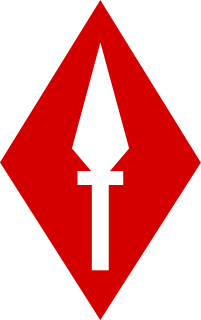
I Corps was an army corps in existence as an active formation in the British Army for most of the 80 years from its creation in the First World War until the end of the Cold War, longer than any other corps. It had a short-lived precursor during the Waterloo Campaign.

The 11th (Northern) Division, was an infantry division of the British Army during the First World War, raised from men who had volunteered for Lord Kitchener's New Armies. The division fought in the Gallipoli Campaign and on the Western Front. The division's insignia was an ankh or ankhus.

The 61st Division was an infantry division of the British Army raised in 1915 during the Great War as a second-line reserve for the first-line battalions of the 48th Division. However, the division was sent to the Western Front in May 1916 and served there for the duration of the First World War.

The II Corps was an army corps of the British Army formed in both the First World War and the Second World War. There had also been a short-lived II Corps during the Waterloo Campaign.
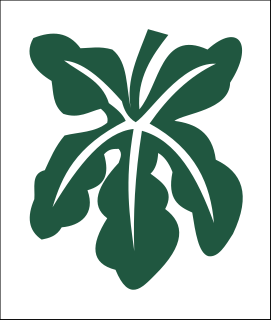
III Corps was an army corps of the British Army formed in both the First World War and the Second World War.
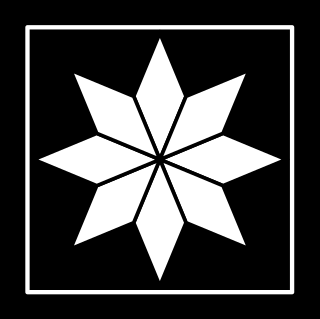
The 47th Division was an infantry division of the British Army, raised in 1908 as part of the Territorial Force.

The Attack at Fromelles 19–20 July 1916, was a military operation on the Western Front during the First World War. The attack was carried out by British and Australian troops and was subsidiary to the Battle of the Somme. General Headquarters (GHQ) of the British Expeditionary Force (BEF) had ordered the First Army and Second Army to prepare attacks to support the Fourth Army on the Somme, 50 mi (80 km) to the south, to exploit any weakening of the German defences opposite. The attack took place 9.9 mi (16 km) from Lille, between the Fauquissart–Trivelet road and Cordonnerie Farm, an area overlooked from Aubers Ridge to the south. The ground was low-lying and much of the defensive fortification by both sides consisted of building breastworks, rather than trenches.

VII Corps was an army corps of the British Army active in the First and Second World Wars. In the early part of the Second World War it was part of the defence forces of the United Kingdom, and later acted as a shadow formation for deception purposes.

General Sir Richard Cyril Byrne Haking,, was a British general who commanded XI Corps in the First World War.

The Essex Yeomanry was a Reserve unit of the British Army that originated in 1797 as local Yeomanry Cavalry Troops in Essex. Reformed after the experience gained in the Second Boer War, it saw active service as cavalry in World War I and as artillery in World War II. Its lineage is maintained by 36 Signal Squadron, part of 71 (Yeomanry) Signal Regiment, Royal Corps of Signals.
The 19th Brigade is an Army Reserve brigade of the British Army. As the 19th Infantry Brigade it fought in the First and Second world wars.
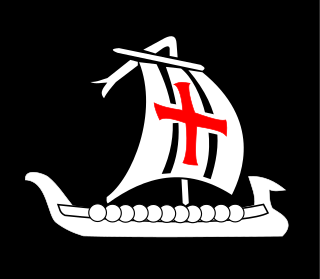
V Corps was an army corps of the British Army that saw service in both the First and the Second World Wars. It was first organised in February 1915 and fought through the First World War on the Western front. It was recreated in June 1940, during the Second World War and was substantially reorganised in 1942 for participation in Operation Torch. It fought through the Tunisia Campaign and later the Italian Campaign.
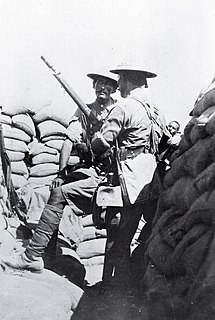
The 7th (Meerut) Division was an infantry division of the British Indian Army that saw active service during World War I.
The 3rd (Lahore) Division was an infantry division of the British Indian Army, first organised in 1852. It saw service during World War I as part of the Indian Corps in France before being moved to the Middle East where it fought against troops of the Ottoman Empire.
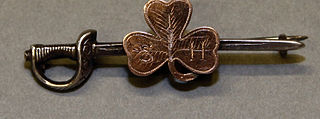
The South Irish Horse was a Special Reserve cavalry regiment of the British Army. Formed as an Imperial Yeomanry regiment in 1902 as the South of Ireland Imperial Yeomanry, it perpetuated a unit formed during the Second Boer War. It transferred to the Special Reserve (Cavalry) in 1908 and was renamed as the South Irish Horse. Having taken part in the fighting of World War I, it was disbanded after Irish Independence in 1922.

The XXI Corps was an Army Corps of the British Army during World War I. The Corps was formed in Palestine in August 1917 under the command of Lieutenant General Edward Bulfin. It formed part of the Egyptian Expeditionary Force (EEF) and served in the Sinai and Palestine Campaign. At the Battle of Sharon it fought what has been described as 'one of the most overwhelmingly successful operations of the war' and 'a precursor to the modern Blitzkrieg.' It then carried out remarkable march up the coast of modern-day Lebanon as the war came to an end.

VI Corps was an army corps of the British Army in the First World War. It was first organised in June 1915 and fought throughout on the Western Front. It was briefly reformed during the Second World War to command forces based in Northern Ireland, but was reorganized as British Forces in Ireland one month later.

The 58th Division was an infantry division created in 1915 as part of the massive expansion of the British Army during the First World War. It was a 2nd Line Territorial Force formation raised as a duplicate of the 56th Division. After training in Britain, the division joined the British Expeditionary Force (BEF) on the Western Front in 1917. It saw action at the battles of Arras and Passchedaele in 1917 and the German spring offensive in 1918. It then took part in the Battle of Amiens and the final Allied Hundred Days Offensive of the war. The division was recreated during the Second World War, as an imaginary deception formation.

The 59th Division was an infantry division of the British Army during World War I. It was formed in late 1914/early 1915 as a 2nd Line Territorial Force formation raised as a duplicate of the 46th Division. After training in the United Kingdom and saw service in the Easter Rising in April 1916, the division joined the British Expeditionary Force (BEF) on the Western Front in early 1917. It saw action at Ypres and Cambrai, and was almost destroyed during the German Army's Spring Offensive in March 1918. The reconstituted division took part in the final advances of the war.
71st Division was a short-lived infantry division of the British Army during the First World War. It served in the Home Defence forces and never went overseas.


















